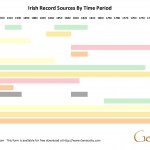Cemeteries offer a treasure trove of information for the genealogist.
Cemetery Location
Just knowing the location of the cemetery your ancestor is buried in can give you information or help you to establish more questions to be answered. Did my ancestor live near here? Are more family buried here? If not, why not? Are there other cemeteries close by that might have family? Remember that cemetery location does not mean your ancestor had residency in that community.
Tombstone
A person’s tombstone can offer information including birth,death, and marriage dates. Other information can be age at death, cause of death, and symbols to indicate interests or occupation. Military experience can also be indicated on the tombstone. No military designation on the stone does not mean the person didn’t serve. Poems and sayings can also help us to understand this person’s life or the people who were left behind.
Tombstone Location
Who is buried around your ancestor? Family, friends, or neighbors? Compare the tombstone neighbors to neighbors in the census. Using tombstone location, I was able to confirm that my husband’s great great uncle was brought home to be buried next to his material grandparents who raised him when he was a small child.
Cemetery History
When did this cemetery begin and where did the land come from? During the time that your ancestors lived in the area (if they did), what kind of occupations would you find? Who were some of the pioneers of the region and did their lives connect to your ancestors? A recent interview with an elderly uncle indicated that the land for a large community cemetery was donated by his grandfather with the understanding that his children would be able to have plots. That would explain why so many of the family are buried in several rows of plots.
Rich with history, cemeteries are key for genealogists to learn about their family history. Make visiting your family’s burial places a priority.
Kim has a passion for Genealogy. After retiring from a career as a teacher, administrator and education consultant, she spent the past several years doing extensive family research. She is a newsletter editor for the Illinois State Genealogical Society and the Peoria County Genealogy Society. Kim is also a member of the Peoria Chapter of DAR Daughter of American Revolution and a member of the General Society of Mayflower Descendants.




